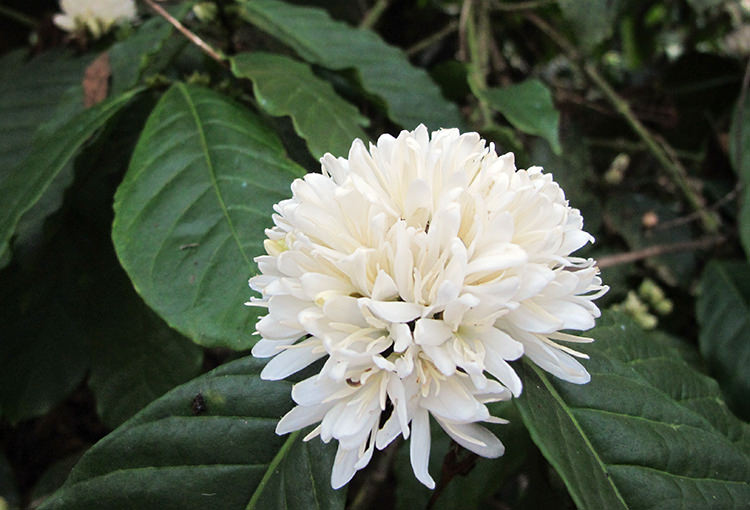
The substance most of us know as coffee is derived from plants of the genus Coffea, which is comprised of small trees or shrubs that evolved in Africa and tropical Asia. Cultivation of coffee is now widespread wherever the climate allows, especially in Central and South America.
The global love affair with this plant is mostly due to its natural defense against herbivores: It produces a bitter alkaloid called caffeine, which is one of the world’s favorite legal drugs. Not only appealing to humans, the caffeine in the shrub’s nectar is enough to provoke pollinators like bees to visit its blossoms three times as frequently as those of other plants.

Coffee “beans” as we know them aren’t beans at all. One pollinated, the shrub produces berry-like, red, drupaceous fruits—colloquially called “cherries”—which contain green pits. These pits are depulped, dried, fermented, and finally roasted to create the product that reaches us in coffee shops and supermarket shelves.
Accordingly, a coffee shrub can’t be planted from a store-bought “bean,” as the heat from roasting will have destroyed the embryonic potential of the seed. However, green coffee pits are easy enough to come by from various seed dealers, as are young coffee plants. It’s worth the effort to try growing this ubiquitous tropical as home for a few reasons.
You may have heard of “shade grown” coffee as a kind of premium, organic selection. In nature, coffee shrubs are found in the forest understory, so the most ecologically friendly coffee plantations grow a canopy of trees, like bananas, over their rows of coffee shrubs. It’s precisely this growth habit—a tolerance of low-light conditions—that makes a coffee shrub an excellent houseplant.

Coffee plants are also attractive: Their foliage is denser and shinier than an indoor ficus, for example. Related to temperate-zone garden favourites like buttonbush (Cephalanthus occidentalis), they have a dome-like cluster of fragrant white blossoms, which begin showing after three to five years when grown from seed.
If the bloom time corresponds with the heat of summer, a coffee plant can even be placed outdoors to be pollinated (or barring that, hand-pollinated), to produce a bright-red flush of coffee cherries.
The coffee plant is a low-maintenance tropical that requires no more than a rich potting soil dense in organic matter and a regular watering regimen. Beyond that, a coffee shrub will sit happily in a container in a lower-light living room for years.




